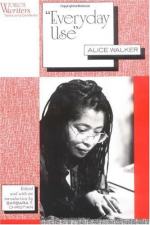|
This section contains 637 words (approx. 2 pages at 400 words per page) |

|
The Black Power Movement
Even before their emancipation from slavery, African Americans struggled to define their collective identity within the framework of American society. Even after slavery was outlawed, blacks gained the right to vote, and legal decisions dismantled formal segregation, true equality was far from reality. By the 1960s, following the success of civil rights leaders like Martin Luther King, Jr. and Malcolm X, some African Americans began to take pride in their heritage as a way of bolstering their esteem, forging a group identity, and creating a platform for greater political power. Known as "black pride" or Black Nationalism, these ideas encouraged many young African Americans to learn about their cultural ancestry, grow their hair into "Afros," dress in traditional African clothing, and reject their "slave names" (as Malcolm X called most blacks' given names). Many of these tendencies are exhibited by Dee and Hakim-a-barber in...
|
This section contains 637 words (approx. 2 pages at 400 words per page) |

|




